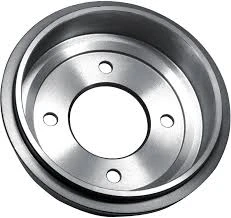
-
 Afrikaans
Afrikaans -
 Albanian
Albanian -
 Amharic
Amharic -
 Arabic
Arabic -
 Armenian
Armenian -
 Azerbaijani
Azerbaijani -
 Basque
Basque -
 Belarusian
Belarusian -
 Bengali
Bengali -
 Bosnian
Bosnian -
 Bulgarian
Bulgarian -
 Catalan
Catalan -
 Cebuano
Cebuano -
 Corsican
Corsican -
 Croatian
Croatian -
 Czech
Czech -
 Danish
Danish -
 Dutch
Dutch -
 English
English -
 Esperanto
Esperanto -
 Estonian
Estonian -
 Finnish
Finnish -
 French
French -
 Frisian
Frisian -
 Galician
Galician -
 Georgian
Georgian -
 German
German -
 Greek
Greek -
 Gujarati
Gujarati -
 Haitian Creole
Haitian Creole -
 hausa
hausa -
 hawaiian
hawaiian -
 Hebrew
Hebrew -
 Hindi
Hindi -
 Miao
Miao -
 Hungarian
Hungarian -
 Icelandic
Icelandic -
 igbo
igbo -
 Indonesian
Indonesian -
 irish
irish -
 Italian
Italian -
 Japanese
Japanese -
 Javanese
Javanese -
 Kannada
Kannada -
 kazakh
kazakh -
 Khmer
Khmer -
 Rwandese
Rwandese -
 Korean
Korean -
 Kurdish
Kurdish -
 Kyrgyz
Kyrgyz -
 Lao
Lao -
 Latin
Latin -
 Latvian
Latvian -
 Lithuanian
Lithuanian -
 Luxembourgish
Luxembourgish -
 Macedonian
Macedonian -
 Malgashi
Malgashi -
 Malay
Malay -
 Malayalam
Malayalam -
 Maltese
Maltese -
 Maori
Maori -
 Marathi
Marathi -
 Mongolian
Mongolian -
 Myanmar
Myanmar -
 Nepali
Nepali -
 Norwegian
Norwegian -
 Norwegian
Norwegian -
 Occitan
Occitan -
 Pashto
Pashto -
 Persian
Persian -
 Polish
Polish -
 Portuguese
Portuguese -
 Punjabi
Punjabi -
 Romanian
Romanian -
 Russian
Russian -
 Samoan
Samoan -
 Scottish Gaelic
Scottish Gaelic -
 Serbian
Serbian -
 Sesotho
Sesotho -
 Shona
Shona -
 Sindhi
Sindhi -
 Sinhala
Sinhala -
 Slovak
Slovak -
 Slovenian
Slovenian -
 Somali
Somali -
 Spanish
Spanish -
 Sundanese
Sundanese -
 Swahili
Swahili -
 Swedish
Swedish -
 Tagalog
Tagalog -
 Tajik
Tajik -
 Tamil
Tamil -
 Tatar
Tatar -
 Telugu
Telugu -
 Thai
Thai -
 Turkish
Turkish -
 Turkmen
Turkmen -
 Ukrainian
Ukrainian -
 Urdu
Urdu -
 Uighur
Uighur -
 Uzbek
Uzbek -
 Vietnamese
Vietnamese -
 Welsh
Welsh -
 Bantu
Bantu -
 Yiddish
Yiddish -
 Yoruba
Yoruba -
 Zulu
Zulu
air brake drum diagram
Understanding the Air Brake Drum A Comprehensive Overview
Air brake systems are vital in ensuring the safety and reliability of heavy vehicles, especially trucks and buses. Among the many components of these systems, the air brake drum plays a crucial role in converting air pressure into the mechanical force that slows down or stops a vehicle. This article will delve into the design and function of the air brake drum, highlighting its significance in vehicle operation.
The Structure of the Air Brake Drum
The air brake drum is a cylindrical component mounted on the wheel hub, typically made of cast iron. Its primary function is to provide a surface for friction through which the braking action is transmitted. The drum is enveloped by brake shoes that expand outward when the brake is applied, creating friction against the inner surface of the drum. This action slows the vehicle down and ultimately brings it to a halt.
In terms of design, the air brake drum includes features such as cooling fins that help dissipate heat generated during braking. This is particularly important in heavy-duty applications where frequent and prolonged braking can lead to overheating. Drums also come in various sizes and dimensions, tailored to the specific requirements of different vehicles and their respective braking systems.
The Functioning of the Air Brake System
The air brake drum operates as part of a larger air brake system, which includes components such as the air compressor, reservoir, and brake chamber. When the driver presses the brake pedal, air is released from the reservoir into the brake chamber, where it acts on a diaphragm. This diaphragm, upon receiving air pressure, pushes the brake shoes against the drum. The friction created slows the wheel's rotation.
air brake drum diagram

One of the significant advantages of an air brake system is its ability to amplify force. The system operates at a higher pressure compared to hydraulic brakes, allowing for more effective braking in large vehicles. Additionally, air brake systems can be equipped with various safety mechanisms, such as slack adjusters and anti-lock braking systems (ABS), to enhance performance and prevent wheel lock-up.
Maintenance and Safety Considerations
Regular maintenance of air brake drum systems is vital to ensure optimal performance. This includes routine inspections to check for wear and damage, as both the brake drums and shoes are subject to wear over time. If the drums become too worn, they can lead to reduced braking efficiency, which poses a safety risk.
Moreover, proper adjustment of the brake shoes is essential. If the shoes are not correctly positioned, it can cause uneven wear on the drum and result in braking problems. Fleet operators often schedule regular checks and service intervals to maintain the integrity of the air brake system, ensuring that all components, including the brake drums, function as intended.
Conclusion
In conclusion, the air brake drum is a critical component of the air brake system, playing a fundamental role in vehicle safety and performance. Its design and function are integral to how large vehicles stop and control their speed. Understanding its mechanics not only highlights its importance but also emphasizes the need for regular maintenance to ensure safety on the roads. For anyone involved in the operation or maintenance of heavy vehicles, familiarity with the air brake drum and its associated systems is essential for promoting safety and efficiency.
-
What Are Drum BrakesNewsJul.07,2025
-
Understanding Brake Drum MaterialNewsJul.07,2025
-
Semi-Trailer Brake Drum: A Key Component for Extreme Loads and Long-Distance TransportNewsJul.07,2025
-
Drum Brake Pads for SaleNewsJul.07,2025
-
Brake Drums for SaleNewsJul.07,2025
-
Brake Drum ManufacturerNewsJul.07,2025
-
Aluminum Brake Drums: The Future of High-Performance CarsNewsJul.07,2025
